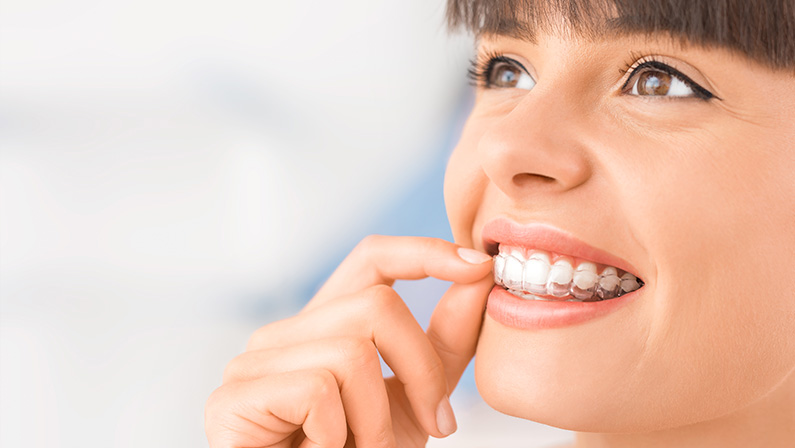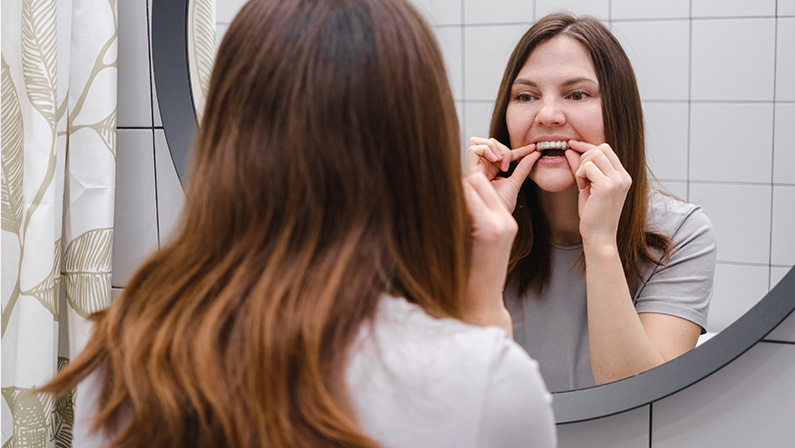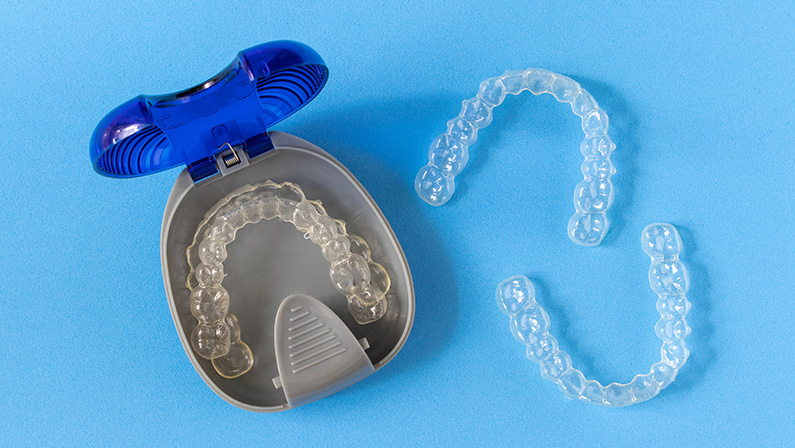When it comes to achieving that coveted straight smile, you have two prominent choices: Invisalign and traditional braces. But which one is the right choice for you? These orthodontic treatments offer distinct advantages and considerations, making it crucial to weigh your options before making a decision.
In this article, we will delve into a detailed comparison of Invisalign and braces, examining their pros and cons, cost factors, and necessary care. By the end, you’ll be equipped with the knowledge to make an informed decision about which option best suits your unique needs and desired outcomes.
Invisalign vs. Braces: Which is better?
When it comes to transforming your smile, the battle between Invisalign and braces takes center stage. These two orthodontic powerhouses, with Invisalign as the leading brand of clear aligners and braces as the tried-and-true traditional option, offer distinct advantages.
Invisalign prides itself on its virtually invisible appearance, granting you the freedom to align your teeth discreetly. On the other hand, braces bring a more conventional and fixed approach to the table. But if you’re wondering which one is better, both have their unique benefits, and the choice ultimately depends on your specific needs and preferences.
What is Invisalign and how does it work?
Invisalign works by utilizing a series of custom-made clear aligners, specifically crafted to fit your teeth snugly. These aligners exert gentle and controlled forces on your teeth, gradually nudging them into their ideal positions over time.
Here’s how the process works: Your dentist or orthodontist will create a personalized treatment plan tailored to address your unique dental needs. Using advanced technology, they will design a series of custom aligners, each slightly different from the previous one. You will wear these aligners in a specific sequence, usually changing them every one to two weeks, as guided by your dental professional.
The aligners are made from a transparent, BPA-free plastic material, ensuring both comfort and discretion. When you wear the aligners, they fit snugly over your teeth, applying gentle pressure to facilitate tooth movement. You will typically wear the aligners for 20-22 hours a day, removing them only for eating, drinking, brushing, and flossing.
As you progress through the series of aligners, your teeth will gradually shift, guided by the carefully calculated movements built into each aligner. How long it takes for Invisalign to transform your teeth depends on many factors. Periodic check-ups with your dentist or orthodontist will allow them to monitor your progress and make any necessary adjustments to ensure the treatment stays on track.
The beauty of Invisalign lies in its flexibility and convenience. The aligners are removable, allowing you to enjoy your favorite foods without restrictions and maintain your regular oral hygiene routine with ease. Plus, the clear, discreet appearance of the aligners means you can undergo orthodontic treatment without drawing unnecessary attention.
Advantages of Clear Aligners
Clear aligners, such as Invisalign, offer several advantages over traditional braces. Here are some of them:
Appearance

One of the most significant advantages of clear aligners is their nearly invisible appearance. They are made of transparent plastic, making them far less noticeable than metal braces.
Comfort
Clear aligners are custom-made for a precise fit, ensuring optimal comfort during your orthodontic treatment. They do not have any metal brackets or wires that can cause irritation or discomfort.
Ease of Brushing and Flossing
Since clear aligners are removable, you can easily maintain your oral hygiene routine without any obstacles. Unlike braces, there are no brackets or wires that can trap food particles and make brushing and flossing challenging.
Fewer Consultations Required
Compared to braces, clear aligners typically require fewer visits to the dentist or orthodontist. Once you receive your series of aligners, you can often follow the treatment plan from the comfort of your home, with periodic check-ins with your dental professional.
Disadvantages of Clear Aligners
While clear aligners have numerous advantages, there are also some considerations to keep in mind.
Inconvenience

The success of Invisalign depends on your dedication to wearing the aligners for the recommended amount of time each day. Failure to comply with the prescribed treatment plan may prolong the duration of treatment or affect the final results.
Not for Complex Corrections
Clear aligners may not be suitable for severe orthodontic issues or complex bite problems. In such cases, traditional braces may be a more effective option for achieving the desired results.
Requires Discipline
Wearing clear aligners requires discipline and responsibility. You must remember to wear them for the recommended duration each day and follow the instructions provided by your dentist or orthodontist.
More Tooth Brushing
Aligners should be removed before eating or drinking anything other than water, necessitating more frequent brushing. This can be seen as an inconvenience, especially for individuals who prefer the convenience of leaving their orthodontic appliance in place while eating.
May Require Visible Attachments
Some cases may require small, tooth-colored attachments to be placed on the teeth temporarily for better aligner grip. While these attachments are discreet, they may still be slightly visible and can affect the aesthetic appeal of clear aligners.
How much do clear aligners cost compared to traditional braces?
The cost of clear aligners, such as Invisalign, varies depending on the complexity of the case and the duration of the treatment. On average, Invisalign can be slightly more expensive than traditional braces. However, it is essential to consult with your dentist or orthodontist to get an accurate cost estimate tailored to your specific needs.
How to Take Care of Your Clear Aligners

Proper care and maintenance of your Invisalign aligners are crucial for a successful treatment journey and maintaining optimal oral hygiene. Follow these essential tips to ensure your aligners stay clean, functional, and in great condition:
1. Daily Cleaning Ritual
Gently brush your aligners every day using a soft toothbrush and a mild soap or the specialized cleaning solution provided by your dentist or orthodontist. This simple practice removes any plaque or bacteria buildup, keeping your aligners fresh and hygienic.
2. Aligner Etiquette during Meals
Remember to remove your aligners before eating or drinking anything other than water. This precaution safeguards your aligners from staining, damage, or exposure to potential discoloring agents. Additionally, removing your aligners allows you to enjoy your meals without any restrictions, enhancing your overall dining experience.
3. Safe Storage Habits
When you’re not wearing your aligners, it’s essential to store them properly to prevent loss or damage. Use the protective case provided by your dentist or orthodontist to keep your aligners secure. Avoid leaving them exposed or wrapped in tissue, as this increases the risk of misplacing or accidentally throwing them away.
What are braces?
Braces consist of metal brackets that are bonded to your teeth and connected with wires. They apply gentle pressure to gradually shift your teeth into proper alignment. Braces offer effective results for a wide range of orthodontic issues and are a popular choice for many individuals.
When should you get braces?
Determining the right time to get braces depends on various factors, including individual dental needs and the recommendation of your dentist or orthodontist. Here are some common indications for considering braces:
1. Malocclusions
If you have bite issues such as an overbite (upper teeth protrude over lower teeth), underbite (lower teeth protrude past upper teeth), crossbite (upper and lower teeth do not align properly), or open bite (teeth do not meet when biting), braces may be recommended to correct these misalignments.
2. Crowding or Spacing
When there is insufficient space for teeth to align properly, crowding occurs. Conversely, excessive gaps between teeth are known as spacing issues. Braces can help correct both crowding and spacing problems, creating a more harmonious smile.
3. Misaligned Teeth
If your teeth are crooked, twisted, or rotated, braces can be an effective solution to straighten them. This improves both the aesthetics and functionality of your smile.
4. Jaw Growth Irregularities
In cases where there are discrepancies in jaw growth or size, braces may be necessary to correct the alignment of the teeth and jaws. This can improve bite function, facial symmetry, and overall oral health.
5. Age Considerations
While braces can be beneficial at any age, certain orthodontic issues are easier to address during specific stages of dental development. It is generally recommended to have an orthodontic evaluation by the age of 7, as some problems can be detected early and treated more effectively.
The Advantages of Braces
Braces offer several advantages for individuals requiring orthodontic treatment. Here are some of them:
Works for Complex Corrections
Braces are suitable for severe malocclusions and complex orthodontic cases that may not be effectively treated with clear aligners alone.
Multiple Options to Choose From
Traditional braces come in different types, including metal, ceramic, and lingual braces, offering choices based on aesthetics and comfort.
Possible to Achieve a Perfect Result
Braces allow for precise control and can achieve highly accurate tooth movements, leading to optimal orthodontic results.
Not Easily Removed
Unlike clear aligners, braces are fixed and cannot be removed. This ensures continuous treatment and reduces the risk of non-compliance.
Faster Treatment Time
In some cases, braces can provide faster results compared to Invisalign or clear aligners, especially when addressing complex orthodontic issues.
Disadvantages of Braces on Your Teeth
While braces offer several advantages, there are some considerations to keep in mind.
Aesthetics of Braces
Braces are more noticeable than clear aligners and may affect your appearance during the treatment period. However, advancements in orthodontics have introduced options like ceramic or clear braces that are less conspicuous.
Brushing Your Teeth
Cleaning around the brackets and wires of braces requires extra effort to maintain optimal oral hygiene. Specialized tools like interdental brushes or water flossers may be recommended for effective plaque removal.
Food Limitations
Certain foods should be avoided to prevent damage to the brackets and wires of braces. Sticky or hard foods can dislodge or break the orthodontic appliance.
Can Leave Stains
If proper oral hygiene is not maintained during orthodontic treatment, braces can potentially lead to tooth discoloration or white spots upon their removal.
Frequent Visits to Your Dentist
Regular adjustments and check-ups are necessary throughout the treatment process to ensure the progress of tooth movement and make any required modifications.
How much do braces cost compared to Invisalign or clear aligners?
The cost of braces varies depending on factors such as the type of braces chosen, the complexity of the case, and the duration of treatment. Traditional braces generally have a lower starting cost compared to Invisalign or clear aligners. However, it is essential to consult with your dentist or orthodontist for an accurate cost assessment.
How to Take Care of Your Braces
Proper care and attention are key to achieving the best possible outcomes during your orthodontic journey with braces. Follow these essential tips to ensure the success and longevity of your braces:
1. Meticulous Oral Hygiene
Maintain diligent oral hygiene practices by brushing your teeth thoroughly at least twice a day and flossing daily. Pay extra attention to cleaning around the brackets and wires to prevent plaque buildup, which can lead to tooth decay and gum problems. Consider using specialized orthodontic brushes or floss threaders for effective cleaning in hard-to-reach areas.
2. Mindful Eating Habits
Avoid sticky, chewy, or hard foods that can cause damage to your braces. Steer clear of items like chewing gum, popcorn, hard candies, and ice cubes. Opt for braces-friendly foods such as soft fruits, cooked vegetables, tender meats, and dairy products. Remember, a little dietary caution goes a long way in safeguarding your braces.
3. Stick to Appointments
Attend all scheduled appointments with your dentist or orthodontist for adjustments and follow-up care. These visits are crucial for monitoring the progress of your treatment, making necessary adjustments, and ensuring your braces are working optimally to straighten your teeth.
How to Decide if Clear Aligners or Braces Is Right For You
The decision between clear aligners and braces depends on various factors, including the complexity of your case, your lifestyle, and personal preferences. Consulting with a qualified dentist or orthodontist, such as Dr. Saif Shere at Brownstone Dental in Houston, TX, will help you make an informed decision tailored to your unique needs.
Invisalign vs Braces: The Verdict
Invisalign and braces are both effective orthodontic treatments that can help you achieve a straighter smile. While clear aligner orthodontics or Invisalign offers advantages in terms of appearance and comfort, braces are a versatile option for complex corrections.
To determine the best choice for your smile transformation, consult with Dr. Saif Shere, DMD, the most trusted cosmetic dentist in Houston, TX, who provides exceptional cosmetic dental services.
Make an appointment with Dr. Saif Shere at Brownstone Dental, located at 9824 Fondren Rd, Houston, TX 77096, to discuss your orthodontic options and embark on a journey towards a confident smile.
Remember, whether you choose Invisalign or braces, the end goal remains the same—a beautiful, straight smile that enhances your overall oral health and boosts your self-confidence.